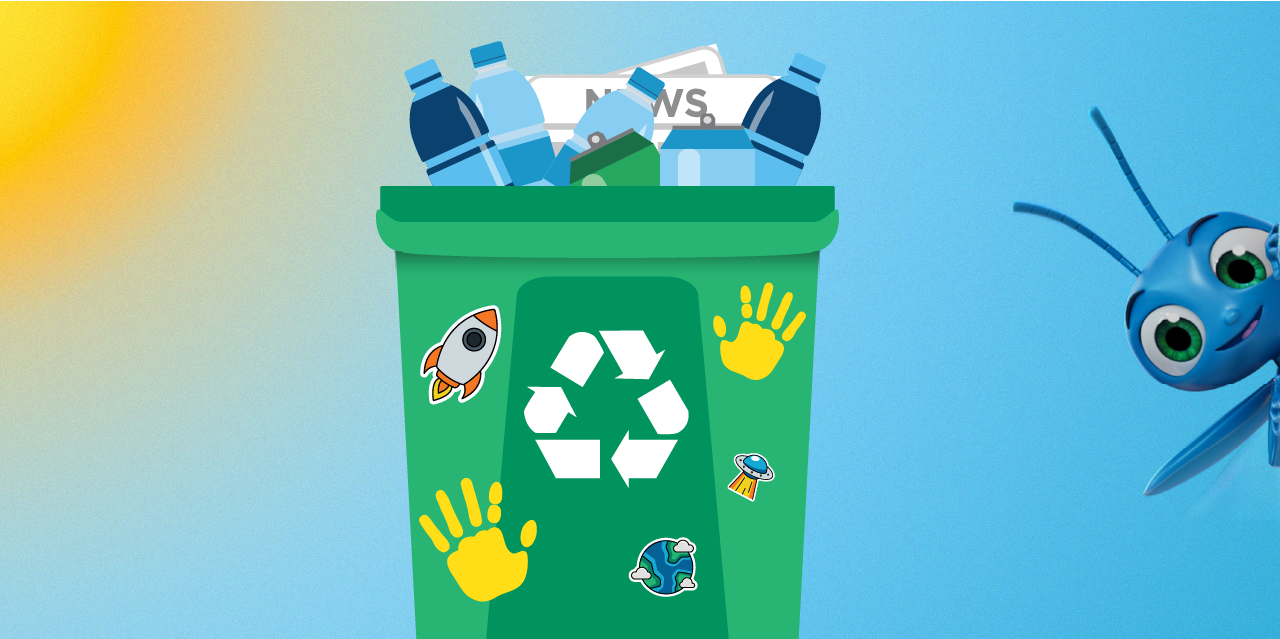Green Mountain Energy® Blog
Get Closer to Carbon-Neutral With Carbon Offsets



Sizing up your carbon footprint
Have you ever wondered how big your carbon footprint is? It's possible to get a fairly close estimate of greenhouse gas emissions associated with daily living.
You're probably familiar with the two biggest polluters in our daily lives: powering one's home with electricity that’s sourced from fossil fuels and driving a gas-powered car.
For your home's power, you can use renewable electricity provided by Green Mountain Energy. In 2020 alone, Green Mountain Energy customers helped the U.S. avoid more than 8.3 billion pounds of carbon emissions, simply by powering their homes with 100% clean electricity.
That’s like taking 10.4 million gas-powered cars off the road for a month.
Taking action
If everything we do has a cost in greenhouse gas emissions, what can we do about it to achieve a more sustainable future?
For the emissions that come from your own activities, there are options.
- Purchase an electric vehicle or only drive when necessary.
- Reduce your electricity usage and your waste output.
- Commit to recycling.
For emissions that come about indirectly, for example those resulting from grocery shopping, air travel and other necessities of life, there are carbon offsets.
Carbon offsets in practice
Since most everyone's life produces carbon emissions, the next best thing you can do is invest in something that reduces them. There are countless programs around the world that are actively engaged in this vital carbon-reduction work, such as reforestation efforts, methane capture programs at landfills and waste facilities, industrial pollutant destruction, agricultural soil management and the advancement of energy efficiency technologies.
In order to fund and continue their work, carbon reduction programs closely measure how many pounds of CO2 and other greenhouse gases they prevent or remove from the atmosphere and certify those pounds as a credit they can sell to others. We call these credits carbon offsets.
What makes a carbon offset credible?
At its core, a carbon offset represents a reduction or removal of greenhouse gases from the atmosphere, intended to compensate for emissions occurring elsewhere. But to ensure those offsets are meaningful, they should meet criteria.
Independent, nonprofit, third-party organizations inspect carbon offsets and what underlies them. The groups include the American Carbon Registry and Verified Carbon Standard (VCS).
What criteria are important in evaluating offsets?
- Additionality: A credible offset must represent a project that wouldn’t have happened without the carbon offset funding. This means the emissions reductions are above and beyond what would occur under business-as-usual scenarios.
- Permanence: The emissions reductions need to be long-lasting. Whether through reforestation or renewable energy, the benefit shouldn't disappear in a few years because of project failure or reversal (like trees being cut down).
- Measurability: A valid offset must be backed by quantifiable data. Project developers should be able to calculate how much carbon dioxide equivalent (CO₂e) has been reduced or removed.
- Verification: Projects must undergo independent third-party audits to confirm that the claimed reductions are real and measurable, and meet rigorous standards.
Transparency is the foundation of trust. Reputable offset providers make project details, methodologies and audit results publicly accessible. This enables buyers to make informed decisions — and hold project developers accountable.
What to look for when buying carbon offsets
If you’re looking to reduce your carbon footprint through offsets, here’s how to separate real impact from greenwashing (overstating or misrepresenting the ecological impact of some action):
- Choose certified offsets: Stick with projects certified by top-tier standards like Gold Standard or VCS. These certifications signal that a project has been thoroughly vetted and meets international best practices.
- Evaluate project types:
- Forestry: Involves planting or conserving trees that absorb CO₂. Great for long-term carbon offsetting, but requires oversight to ensure permanence.
- Landfill methane: Captures methane — a potent greenhouse gas — from landfill sites and uses it for energy.
- Renewable energy: Funds wind, solar or hydroelectric projects that displace fossil fuels.
- Clean cookstoves: Reduces emissions by replacing open fires or inefficient stoves in developing regions with cleaner alternatives.
- Consider location:
- Local projects may offer community benefits and easier access to performance data.
- International projects often provide more cost-effective credits and can drive impact where it's needed most.
- Prioritize transparency and impact reporting: Look for offset providers that share regular updates, project documentation and third-party verification reports. The more transparent the project, the more confident you can be in its results.
Green Mountain Energy and carbon offsets
We open our books each year to a third-party auditor. These audits ensure that 100% of the clean electricity our customers purchase is backed by renewable energy projects. You can learn more here.
We offer select Green-e® Energy certified products to commercial customers. These include our Green Mountain Energy Certified Electricity – TRE product.
Buying carbon offsets can be a powerful tool in your sustainability tool kit — but only if those offsets are credible, certified and transparently managed. By understanding what to look for, you can support real-world solutions that help move us toward a more stable climate.
How to have a carbon-neutral lifestyle
Anyone can purchase carbon offsets, and people do so for a variety of reasons. Many businesses, both small and large (including us), will regularly buy carbon offsets in an amount that's roughly equal to their yearly carbon emissions, effectively becoming a carbon-neutral company. Families that are going on vacation will buy carbon offsets to compensate for plane flights and other waste generated by their trip. Individuals with daily commutes will buy carbon offsets to offset the emissions from their gas-powered car. When you combine the purchase of carbon offsets with using renewable energy and greener living practices, your net carbon footprint gets lower and lower. The end goal is total carbon neutrality. And while there's no way to guarantee that your net carbon footprint is exactly zero, buying carbon offsets regularly can get you as close to net zero as possible.
Everyday activities that can be offset
Even when we try to live sustainably, some carbon-emitting activities are part of everyday life. The good news is carbon offsets let us take responsibility for those unavoidable emissions, making a real impact without demanding perfection.
- Air travel: A single round-trip flight can emit hundreds of pounds of CO₂ per passenger. While flying may be necessary for work, family or leisure, it comes with a significant environmental cost. Offsets help neutralize these emissions by funding projects like reforestation and renewable energy that absorb or prevent an equivalent amount of carbon elsewhere.
- Daily driving and commuting: Most vehicles still run on gasoline, contributing to greenhouse gas emissions with every trip. Even short daily commutes add up over time. Whether you drive a hybrid or carpool occasionally, offsetting your travel emissions can balance out your footprint in ways that traditional efficiency alone can’t.
- Home energy usage: Heating, cooling and electricity use in homes all rely heavily on fossil fuels. Your thermostat settings, appliance use and lighting habits shape your energy footprint. By purchasing carbon offsets, you can counteract emissions from your home's energy consumption — even if switching to solar or improving insulation isn’t immediately possible.
- Online shopping and shipping: The convenience of next-day delivery comes at a cost. Transportation and packaging used in shipping contribute to rising emissions. Even sporadic online purchases add up, but offsets can help mitigate the impact by supporting cleaner supply chains and climate-positive solutions.
You don’t have to be perfect.
Carbon offsets empower us to reduce our climate impact even when emissions are baked into our routines. There’s no need to pursue perfection either. The idea is to make the strongest contribution to a healthier planet that we can.
Combining offsets with renewable energy choices and small behavior changes — like driving less or switching to LED bulbs — makes for a compounding effect.
For our carbon offset products, Green Mountain Energy only offers those certified by one of the offset registries, such as Climate Action Reserve. These third parties enforce standards in offsets.
- Real: Emissions reductions have actually occurred.
- Permanent: Emissions reductions won’t be reversed in the future.
- Verifiable: Emissions reductions can be verified by an independent third party.
- Enforceable: Ownership can be clearly defined and enforced.
- Additional: Emissions reductions go beyond a “business as usual” scenario and what’s required by law.
Offsetting your footprint isn't about guilt. It’s about giving yourself a chance to be part of the solution, one thoughtful decision at a time.
Find a renewable energy plan that helps your home go green.
Enter your ZIP code to get started.
Our customers have avoided
pounds of CO2
That’s like planting
new trees.





